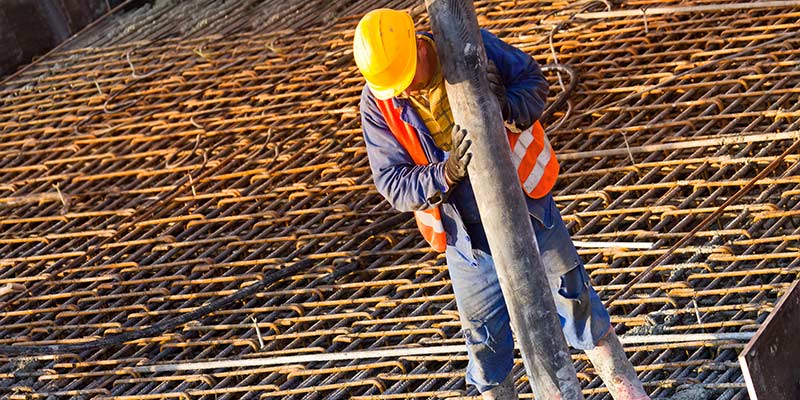Hidden worker injuries

Improving the safety of using concrete
When we think of worker safety on construction sites, we tend to think of trip and fall incidents, but injuries that develop over time to workers' backs, knees, and shoulders are actually a major problem as well. In fact, these types of injuries are the largest cause of medical expenses and lost work time in the U.S. and Canada, according to the Washington Ergonomic Project. As you can imagine, the weight of concrete and the continuous repetition from shovelling, spreading, and raking concrete makes it a major culprit in worker injuries.
In some cases, mechanical aids can reduce this risk, but there are still many instances where concrete slabs are placed without this benefit, due to space or other site constraints.
The high risk of injury has led many to advocate for higher flowing concrete. It’s not just the worker’s compensation costs that are worrying contractors. The safety issues associated with handling concrete may be exacerbating the labour shortage in the construction sector. It’s hard to recruit new hires to do construction work if they’re worried about a debilitating injury.
A path to safety
Increasing the concrete slump rate is an important factor for improving worker safety. A higher slump concrete can help reduce the likelihood of injuries to muscles, joints, and spinal discs, since less effort and force is required to place and finish the concrete. The end result is faster and safer construction. The industry continues to advocate for safety and using higher flowing concrete will improve overall job site safety. A recent article in concrete Contractor magazine highlighted the fact that higher flowing concrete will improve overall job site safety.
Self-consolidating concrete and a new high flow alternative called control flow concrete both fulfil this purpose, giving contractors options that are highly workable and much safer for workers.
Download brochure on CONCERA™ control flow concrete
Tags
- Airports
- Architects
- Arts & education
- CONCERA®
- Commercial buildings
- Concrete
- Concrete admixtures
- Contractor
- Design Advantage
- Energy facilities
- Engineer
- Industrial facilities
- Infrastructure
- Mass transit
- Museums
- Retail buildings
- Schools
- Sports stadiums
- Structural Solutions
- Subcontractor
- Transportation Infrastructure